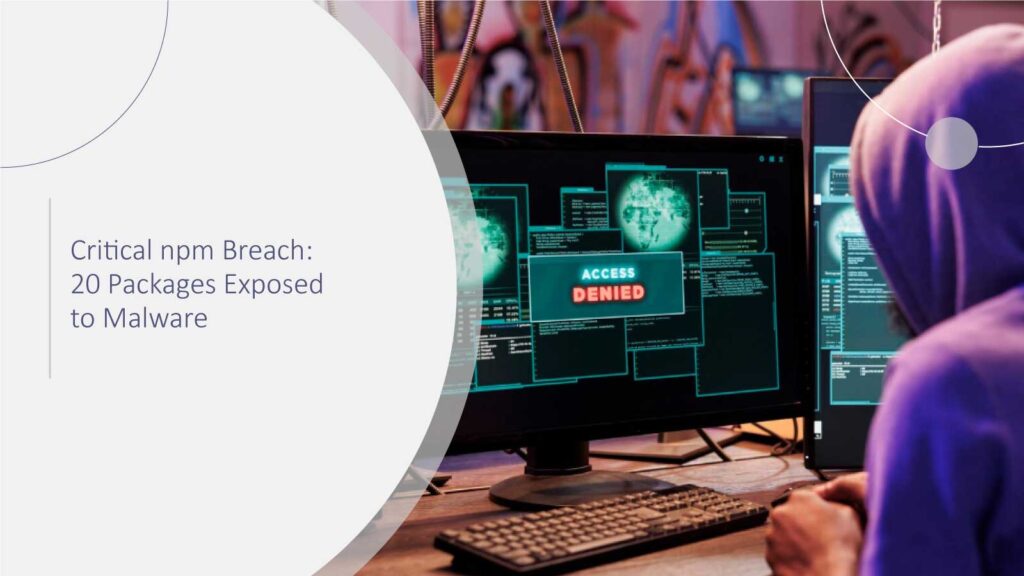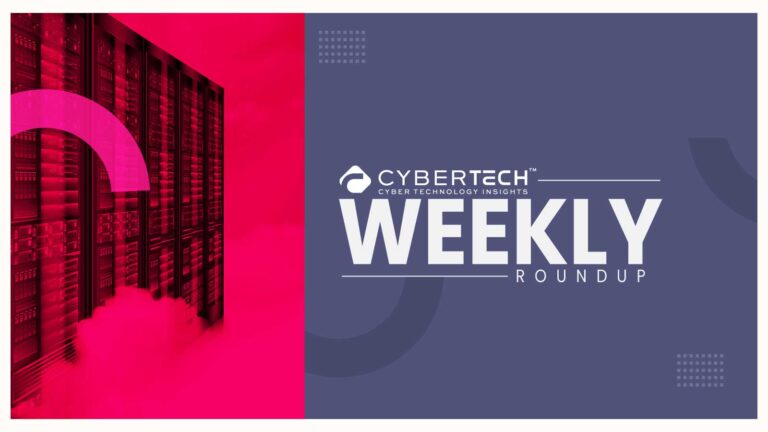Introduction – When Trust Gets Hijacked
Try to envision that you were used to buying your coffee every morning in the same café, and you decide to go this morning only to find out that the sugar packets have been replaced by something dangerous for your health. The developers were in the same situation when the news was released that 20 widely-used npm packages, including chalk and debug, were compromised in a record-breaking supply-chain attack.
That wasn’t a problem only with the open-source communities that have been hit the hardest, but the whole software development community has been affected by these libraries that are downloaded over 2.6 billion times per week. This was not just another alarm signal for the cybersecurity department. It was a wake-up call for everyone who writes, installs, or uses open-source code.
We will explore here what, why, and how professional developers to CISOs learn from it.
What Really Happened: Anatomy of the Attack
The sudden strike was a result of a phishing email that was sent to Josh Junon (qix), a maintainer of these popular npm packages. The message was supposed to come from “support@npmjs.help,” a domain that looks like the real npmjs.com support team. This is a classic social engineering case, tricking someone into allowing access instead of breaking through.
The unauthorised access to Junon’s account was quickly followed by malicious updates injected into 20 packages. The malware’s goal was to interfere with cryptocurrency wallets by changing the addresses during the transactions–a process, therefore, invisible to most users.
The malicious software didn’t limit itself to that. The research published on various developer forums reveals the multi-layered nature of the payload. It modified API calls and stealthily directed crypto transactions as if it were a hijacker embedded in browser-based workflows. The perpetrator utilized browser APIs such as fetch and XMLHttpRequest and simultaneously rewrote the requests and responses in real time to complete the process.
To begin with, this was not merely a code injection incident. It was one of the most significant supply-chain breaches in npm history.
Why This Breach Hits Close to Home
If you are a developer or tech leader, the first thought that might come to your mind is: Isn’t it that we are using open-source packages all the time? So why should this kind of thing happen to us?”
In McKinsey’s 2024 Global Supply Chain Leader Survey, nine in ten corporate supply chain executives reported that they had encountered supply chain challenges in 2024
The succinct response to this would be yes, yet the reality of this situation is different. The open-source ecosystems are heavily dependent on the trust of their users. The impact of such breaches is so wide that it can affect those who have merely installed the updated dependencies without even being aware of the incident, and the ripple can extend to those who haven’t updated their versions of the compromised package.
In a nutshell, Mike McGuire, Senior Security Solutions Manager at Black Duck, says:
“One of the main reasons for the selective visibility of security incidents in the area of software supply chains is the large number of transitive dependencies brought about by the nature of open-source usage in some cases, upwards of 70% or more of commercial applications. This leaves the door wide open for attacks like the browser-based interceptor one to infiltrate and reside unnoticed until after a breach.”
Over the past two years, nearly one-third of cyber breaches have been associated with the technology supply chain, as per McKinsey.
Exactly so. Dependencies are like the weakest links in the chain. If one of them breaks, the whole chain is at risk.
The Bigger Picture: Supply-Chain Attacks on the Rise
This npm breach is not an accident or a single-event story. The 2024 Open Source Security and Risk Analysis (OSSRA) Report by Synopsys reveals that 84% of codebases today have at least one vulnerability found in open-source components used. Attackers know this very well. Hen, they are choosing to target et software supply chain more and more, because one malware can make them affect millions with just one access point.
This event also shows another change in the attackers’ strategies. They are going closer to the client side, taking advantage of browser APIs and the trust developers put in package registries. Just imagine the digital Trojan horse malicious code sneaking in through a trusted channel.
Lessons for Professionals and Teams
What follows is a detail of practical lessons from the professional’s point of view, who are often pressed for time but are still responsible for security:
1. Make Phishing Resistance Non-Negotiable
Even the most technically skilled support staff are not immune to the deception of a very well-constructed phishing email. Multi-factor authentication (MFA) as well as security keys should be the standard for all developer accounts, no exceptions.
2. Automate Dependency Scanning
Software Composition Analysis (SCA) and SBOM generation (Software Bill of Materials) are a couple of instruments that help to discover the deviations well before the affected software is distributed further. If these instruments are tied up directly to your CI/CD pipeline, on-the-spot transparency can be achieved.
44 % of organizations will substantially increase year-over-year spend on supply chain cybersecurity, according to Gartner.
3. Treat Browser Dependencies Like Critical Infrastructure
Randolph Barr, CISO at Cequence Security, pointed out:
“Poisoned dependencies can weaponize APIs. Organizations need API security platforms that provide anomaly detection to ensure that what the user intended is what actually gets executed.”
This essentially means that several steps back are to be taken beyond the conventional methods of control. Server-side guardrails, destination drift detection, and response validation are no longer “nice to have,” but “must-haves.”
4. Centrally Manage Third-Party Tools
As more MCP connectors and other integration tools are adopted by enterprises, the risk of a compromised connector that can exfiltrate sensitive data is just as high as a compromised package. A centrally managed server with scoped access and human-in-the-loop approvals can act as a front-line defense and signal the presence of adversaries at an early stage.
A Human Reality: Why This Feels Different
If you’ve ever casually installed an npm package without giving it a second thought, you’re not the only one. In fact, we all do that. Open source has come to be the stronghold of contemporary software. Therefore, this break feels like a close hit.
It is not just that crypto wallets are stolen; rather, it refers to the faith we have in the invisible plumbing of the internet.
Besides, it’s a warning that security should be everyone’s concern. Every participant in the developing and maintaining community, the enterprises, and the end-users, is responsible for the ecosystem’s safety.
Moreover, there is a little irony in that: the very same packages that were used for the building of secure applications have now become a vector for stealing. On the other hand, one considers how irony is only used to reinforce the need for carefulness.
Moving Forward: From Reactive to Proactive
Such a hijacking of npm, like this incident, is a prompt to act. As McGuire mentioned, we need to go beyond just reactive measures. This means adopting risk intelligence not at the end but as a part of the development workflow right from the start.
Not only will the organizations that perform this step well be able to shrink their vulnerability to attacks, but also gain the trust of users and customers, thus becoming a competitive advantage in today’s market.
Conclusion – Building Trust in an Open-World
The npm breach vividly portrays that open ecosystems, albeit reliable, are always exposed to attacks. Nevertheless, this incident is also opening a way through: preparedness, such as more robust account security, automated scanning, and proactive risk management.
The point to be taken by tech leaders and busy professionals is succinct: trust, but do not trust blindly. Open-source software is the primary innovation engine, but it relies on the collective efforts of the entire community to ensure its security.
FAQs
1. What is npm, and why is it important?
npm (Node Package Manager) is the largest and most comprehensive software registry for JavaScript packages in the world. Developers outsource the installation and sharing of open-source libraries through it, which are the fundamental building blocks of websites, apps, and enterprise systems.
2. How did the attackers compromise the npm packages?
The malicious actors sent a phishing email that allowed them to take over the maintainer’s account and then publish infected updates to 20 popular npm packages. The malware targeted at cryptocurrency wallets by intercepting and modifying API requests was the objective.
3. Who is impacted by this breach?
The users whose crypto wallets have been tampered with are the ones who can suffer monetary losses directly. The companies that, during a ~2.5-hour compromise period, installed these packages may have customers to whom they provided already infected devices without knowing it.
4. What steps can organizations take to avoid being targeted in similar ways?
Utilize developer accounts with MFA, employ SCA tools and SBOM technology to assist with continuous integration and continuous delivery activities, secure API with fault detection technology, and make use of third-party tools with limited access from a central location.
5. Is open-source software still safe to use?
Open-source software is still the main technology that the world leans on for innovation purposes. However, organizations are forced to engage in constant surveillance and scanning, always ensuring the top-down qualification of maintainers, and being vigilant about the supply chain to keep risks at a minimum.
For deeper insights on agentic AI governance, identity controls, and real‑world breach data, visit Cyber Tech Insights.
To participate in upcoming interviews, please reach out to our CyberTech Media Room at sudipto@intentamplify.com.







